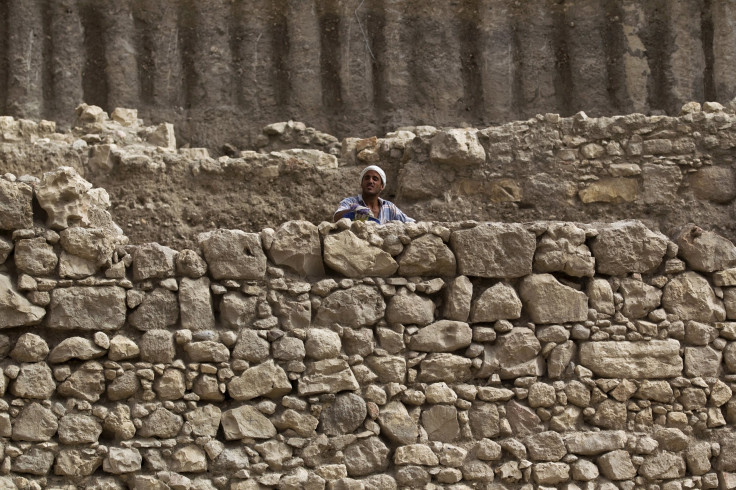Jerusalem Archeology News In 2015: Fortress Of Hanukkah Villain Antiochus IV Epiphanes Discovered

A portion of a long-lost fortress was uncovered in Jerusalem in what archaeologists are calling the “solution to one of the great archaeological riddles in the history” of the city. Researchers announced Tuesday the discovery of the fortress used by the Seleucid Greek King Antiochus IV Epiphanes in 168 B.C., according to the Times of Israel.
Researchers believe the fortress served as part of a system of defenses built by Antiochus, who is known as the Hanukkah villain. Hebrew teachings remember Antiochus as the one who issued a ban on Jewish religious rites that prompted the Maccabean Revolt, which Hannukah celebrates. The fortress is mentioned in the Books of Maccabees I and II.
“This sensational discovery allows us for the first time to reconstruct the layout of settlement and the actual look of the city on the eve of the Hasmonean revolt,” said the excavation’s directors, Doron Ben-Ami, Salome Cohen and Yana Tchekhanovets.
After a more than 10-year archaeological dig, it was found in the City of David, which is south of the Old City walls and the Temple Mount. The ruins were discovered under a parking lot in the area. Some of the stones are marked with an image of a pitchfork -- the symbol for Antiochus, according to the Times of Israel.
“The Acra fortress was used by his Seleucids to oversee the Temple and maintain control over Jerusalem,” the Times of Israel reported. “The fortress was manned by Hellenized Jews, who many scholars believe were then engaged in a full-fledged civil war with traditionalist Jews represented by the Maccabees. Mercenaries paid by Antiochus rounded out the force.”
#photooftheday Arrowheads uncovered by Israeli archaeologists at an ancient Greek fortress are shown in #Jerusalem pic.twitter.com/XqGjjmMlgg
— IsraelPulse (@IsraelPulse) November 4, 2015The finding ends a centurylong search. Some archaeologists have hailed the discovery as “a dream come true,” according to the Israel Antiquities Authority, cited by LiveScience.
“The new archaeological finds testify to the establishment of a properly fortified stronghold constructed on the high bedrock cliff overlooking the steep slopes of the City of David hill,” the researchers said Tuesday. “This stronghold controlled all means of approach to the Temple, and cut the Temple off from the southern parts of the city. The many coins dating from the reign of Antiochus IV [Epiphanes] to that of Antiochus VII [Sidetes] and the large number of wine jars (amphorae) that were imported from the Aegean region to Jerusalem and were found at the site bear witness to the citadel’s age, as well as to the non-Jewish identity of its inhabitants.”
© Copyright IBTimes 2024. All rights reserved.






















